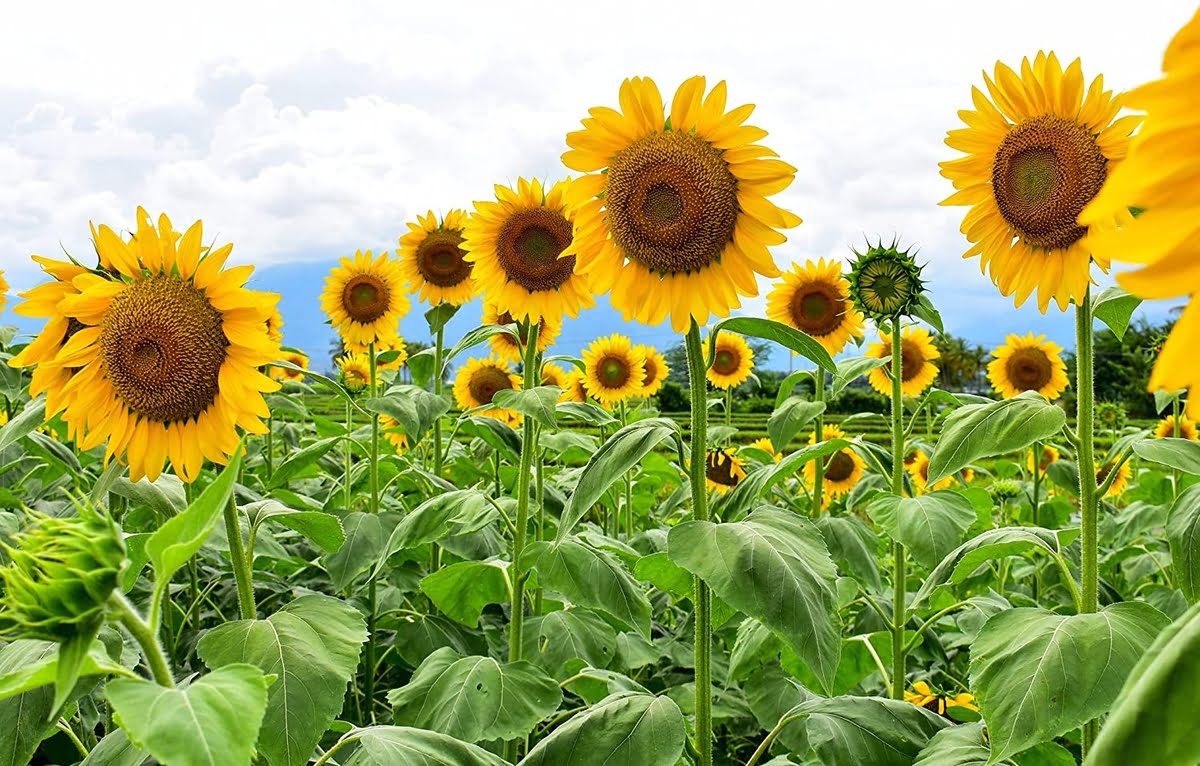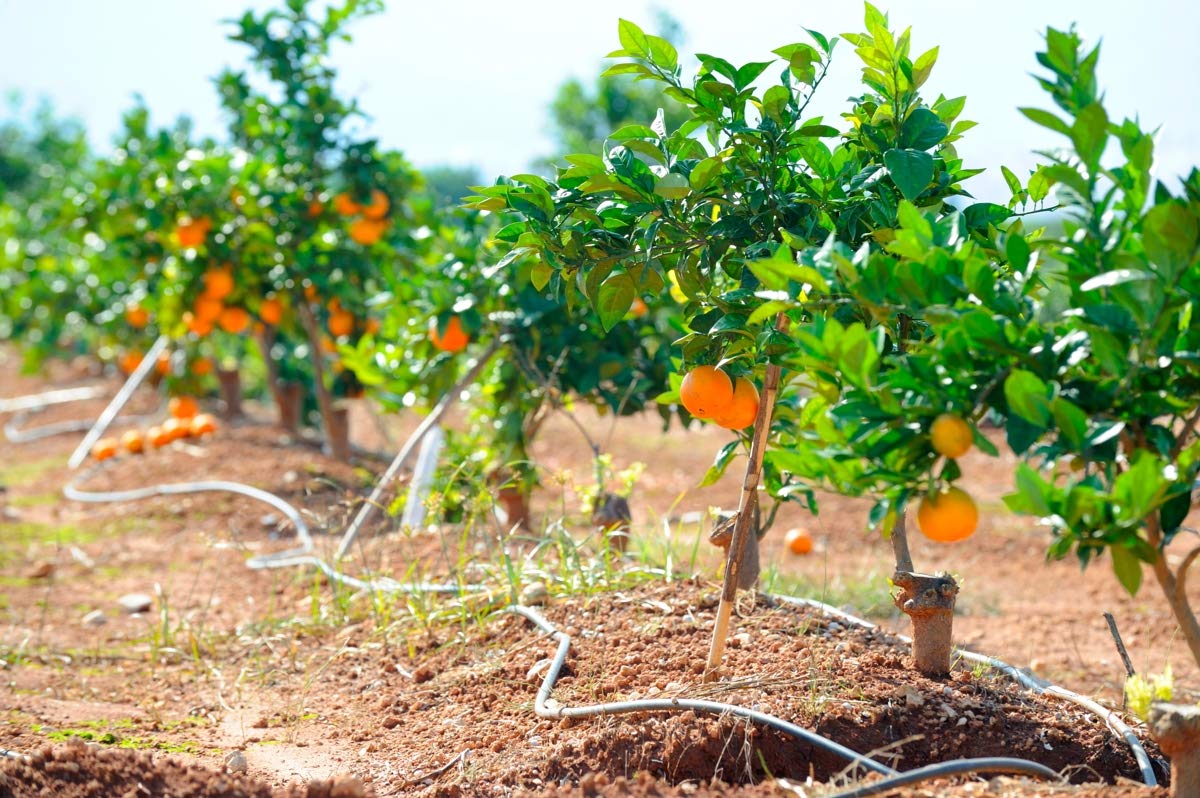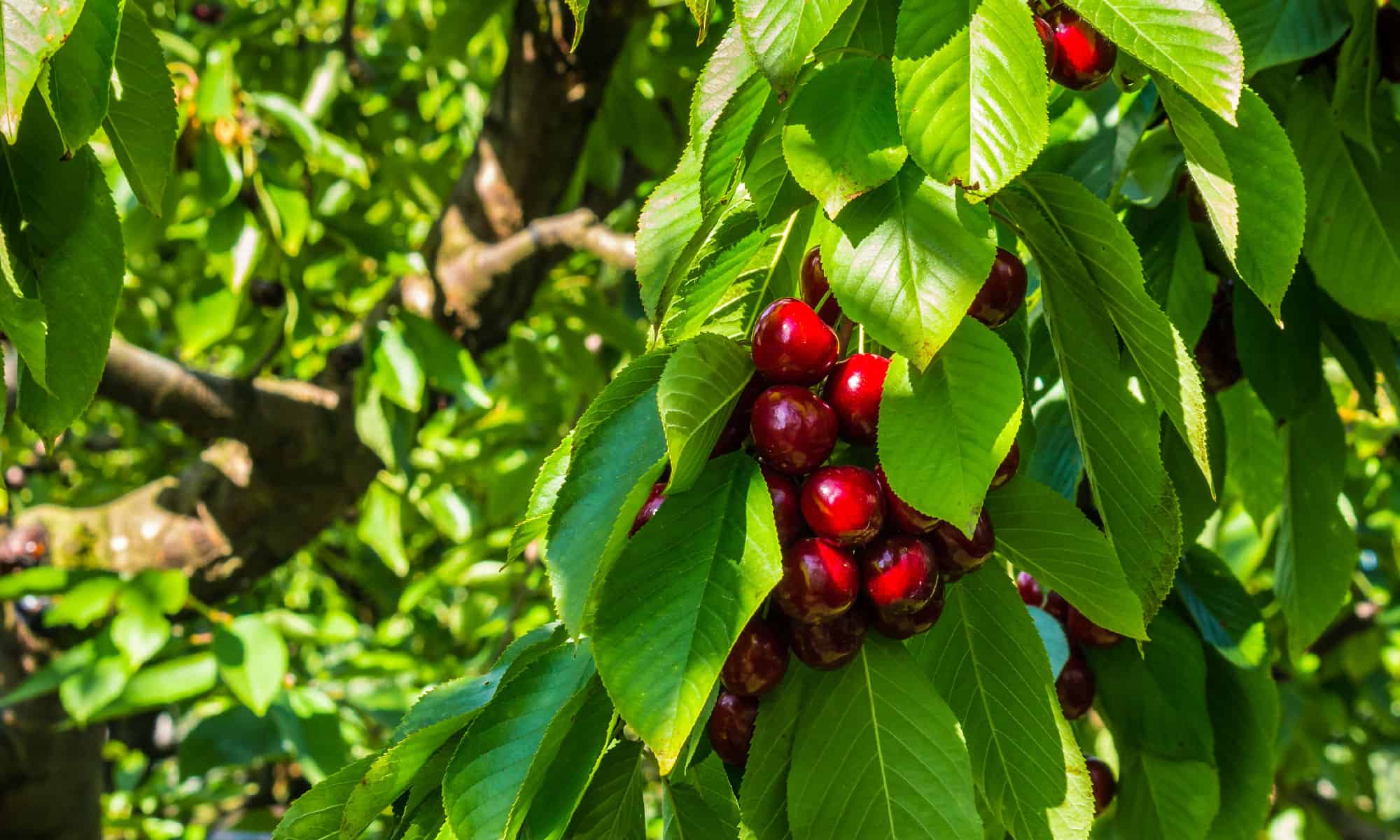Home>Gardening Techniques>Plant Care>How Long Does It Take Pine Trees To Grow


Plant Care
How Long Does It Take Pine Trees To Grow
Published: October 31, 2023
Discover the timeline of pine tree growth and learn essential plant care tips. Find out how long it takes for these majestic trees to reach maturity and thrive in your landscape.
(Many of the links in this article redirect to a specific reviewed product. Your purchase of these products through affiliate links helps to generate commission for Chicagolandgardening.com, at no extra cost. Learn more)
Table of Contents
- Introduction
- Factors Affecting Growth Rate of Pine Trees
- Varieties of Pine Trees and Their Growth Rates
- Ideal Growing Conditions for Pine Trees
- Average Time it Takes for Pine Trees to Reach Maturity
- Factors That Can Slow Down or Accelerate Pine Tree Growth
- Tips for Promoting Faster Growth of Pine Trees
- Conclusion
Introduction
Welcome to the world of pine trees, where nature’s beauty takes the form of majestic evergreens. Whether you have a sprawling backyard or a small patch of land, planting pine trees can bring a sense of serenity and create a picturesque landscape.
But before you embark on this journey, it’s important to understand the growth rate of pine trees and the factors that can influence their development. Knowing how long it takes for these trees to reach maturity will help you plan and manage your garden effectively.
Pine trees are known for their resilience and ability to thrive in various climates. They are commonly found in temperate regions and are well adapted to both cold and warm environments. While their growth can be relatively slow compared to some other tree species, the patient gardener will be rewarded with their long-lasting beauty and the many benefits they bring to the ecosystem.
Throughout this article, we will explore the different factors that can affect the growth rate of pine trees, the varieties available, the ideal growing conditions, and tips to promote faster growth. So, let’s dive in and discover the secrets behind the growth of these remarkable trees.
Factors Affecting Growth Rate of Pine Trees
The growth rate of pine trees can vary based on several factors. Understanding these factors will help you create the optimal conditions for your pine trees to thrive.
1. Climate: Pine trees are adaptable and can grow in a range of climates, from cold regions to warm Mediterranean areas. However, the specific climate conditions will affect their growth rate. Pine trees generally prefer cool or mild temperatures and moderate rainfall. Extreme cold, heat, or drought can slow down their growth.
2. Soil Quality: The quality and composition of the soil also play a significant role in the growth of pine trees. They prefer well-draining soils that are rich in organic matter. Soil pH levels should be slightly acidic to neutral. If the soil is too compacted or lacks essential nutrients, it can hinder their growth.
3. Sunlight Exposure: Pine trees thrive in full sunlight. When choosing a location to plant your pine trees, ensure they receive at least 6-8 hours of direct sunlight daily. Limited sunlight or excessive shade can result in stunted growth.
4. Water Availability: Adequate water supply is crucial for the growth of pine trees, particularly during their early stages. While they are drought-tolerant once established, young pine trees require regular watering. Insufficient or excessive water can affect their overall health and growth.
5. Nutrient Availability: Pine trees need essential nutrients, including nitrogen, phosphorus, and potassium, to support their growth. Fertilizing the soil with a balanced slow-release fertilizer can help provide these nutrients. However, over-fertilization can be detrimental, so it’s important to follow the recommended guidelines.
6. Competition with Other Plants: Pine trees are often planted in forested areas where they naturally compete with other plants for resources. In a garden setting, minimizing competition from grass, weeds, or other plants can help promote faster growth by reducing resource competition.
7. Genetics: The genetic makeup of a specific pine tree variety can also influence its growth rate. Some varieties are naturally faster-growing, while others may have slower growth rates. Research the characteristics of different pine tree varieties to determine which one aligns with your desired growth rate.
By considering these factors and providing optimal growing conditions, you can encourage robust growth in your pine trees and create a thriving and vibrant landscape.
Varieties of Pine Trees and Their Growth Rates
The world of pine trees is diverse, with various species and cultivars that exhibit different growth rates. Understanding the characteristics of different pine tree varieties will help you choose the one that best suits your requirements and desired growth rate.
1. Eastern White Pine (Pinus Strobus): The Eastern White Pine is a fast-growing pine tree, known for its tall and graceful appearance. It can reach heights of 50-80 feet within 25-30 years, making it one of the quicker-growing pine tree species.
2. Loblolly Pine (Pinus taeda): Loblolly pines are native to the southeastern United States and are valued for their fast growth rate. They can reach heights of 60-90 feet within 25-30 years. They are commonly used in reforestation projects due to their rapid growth.
3. Ponderosa Pine (Pinus ponderosa): Ponderosa pines are native to western North America and are known for their impressive size and strength. While their growth rate can vary depending on the climate, they typically reach heights of 40-60 feet within 25-30 years.
4. Scots Pine (Pinus sylvestris): The Scots pine is a hardy evergreen tree native to Europe and Asia. It has a moderate growth rate and can reach heights of 30-50 feet within 25-30 years. It is often planted for its ornamental value and its ability to withstand harsh conditions.
5. Douglas Fir (Pseudotsuga menziesii): Although not a true pine tree, the Douglas fir is included here for its popularity and growth rate. It is a fast-growing evergreen tree that can reach heights of 40-70 feet within 25-30 years. It is commonly used as a Christmas tree and for timber production.
It’s important to note that the growth rates mentioned above are rough estimates and can be influenced by various factors such as climate, soil conditions, and maintenance practices. Additionally, different cultivars within each species can have slightly different growth rates.
When selecting a pine tree variety, consider the growth rate that aligns with your preferences and the available space in your garden. Keep in mind that faster-growing varieties may require more regular maintenance, such as pruning and shaping, to control their size and maintain their desired appearance.
By carefully choosing the right pine tree variety, you can create a beautiful and flourishing landscape that meets your aesthetic and growth rate goals.
Ideal Growing Conditions for Pine Trees
Providing the ideal growing conditions for your pine trees will greatly contribute to their health and growth rate. Here are some key factors to consider:
1. Sunlight: Pine trees thrive in full sunlight. Ensure that your planting location receives at least 6-8 hours of direct sunlight each day. This will help promote optimal growth and ensure the development of a well-shaped and healthy tree.
2. Soil: Pine trees prefer well-draining soil that is rich in organic matter. The soil should be slightly acidic to neutral with a pH ranging from 5.5 to 7.5. Conduct a soil test to determine the pH level and make any necessary amendments to achieve the ideal conditions for your pine trees.
3. Water: Adequate watering is crucial during the establishment phase of pine trees. Provide consistent moisture to the soil, especially during dry periods, to promote healthy root development. Once established, pine trees are relatively drought-tolerant, but regular watering during prolonged dry spells will help maintain their overall health and growth rate.
4. Space: Consider the mature size of the pine tree variety you have chosen and allow sufficient space for its growth. Overcrowding can hinder air circulation and lead to increased disease susceptibility. Each tree variety has different spacing requirements, so consult a nursery or gardening expert for specific recommendations.
5. Mulching: Apply a layer of mulch around the base of your pine trees to retain moisture, regulate soil temperature, and suppress weed growth. Use organic mulch such as wood chips or pine straw and avoid piling the mulch directly against the trunk, as this can lead to rot.
6. Pruning: Regular pruning is essential for maintaining the health and shape of your pine trees. Prune any dead or diseased branches to promote air circulation and prevent the spread of diseases. Additionally, selective pruning can help control the size and shape of the tree, ensuring its growth does not become excessive or unmanageable.
7. Fertilization: Pine trees generally do not require heavy fertilization. However, applying a balanced slow-release fertilizer in early spring can provide the necessary nutrients to support their growth. It is essential to follow the recommended dosage to avoid over-fertilization, which can be harmful to the tree.
By providing these ideal growing conditions, you can create an environment that allows your pine trees to flourish, ensuring their health and promoting optimal growth rates.
Average Time it Takes for Pine Trees to Reach Maturity
Pine trees are known for their longevity, and they can take several decades to reach maturity. The time it takes for pine trees to reach maturity can vary depending on various factors, including the species, growing conditions, and environmental factors.
1. Fast-growing Pine Trees: Some pine tree species are known for their relatively fast growth rate. For example, the Eastern White Pine (Pinus strobus) and Loblolly Pine (Pinus taeda) are considered fast-growing varieties. These trees can reach heights of 50-80 feet within 25-30 years, making them popular choices for quick results.
2. Moderate to Slow-growing Pine Trees: Many pine tree species fall into the category of moderate to slow-growing trees. These trees may take longer to reach maturity, but they often have other desirable attributes, such as strong wood or unique foliage. Examples include the Ponderosa Pine (Pinus ponderosa) and Scots Pine (Pinus sylvestris). These trees typically reach heights of 30-60 feet within 25-30 years.
3. Longevity and Continued Growth: It’s important to note that even when pine trees reach maturity, they can continue to grow throughout their lifespan. While growth rate may slow down after maturity, these trees can live for several hundred years and continue to add height and girth over time.
On average, it can take anywhere from 25 to 50 years for pine trees to reach maturity, depending on the species and growing conditions. It’s essential to be patient and provide consistent care and maintenance to ensure the healthy development of these trees.
Other factors, such as proper pruning, fertilization, and disease prevention, can help promote growth and allow the tree to reach its full potential within the estimated time frame. However, it’s important to keep in mind that each tree is unique, and growth rates can vary even within the same species.
By understanding the growth process of pine trees and managing their care accordingly, you can enjoy a beautiful and mature pine tree that enhances the landscape and provides numerous benefits for years to come.
Factors That Can Slow Down or Accelerate Pine Tree Growth
Several factors can have a significant impact on the growth rate of pine trees. These factors can either slow down or accelerate their growth, depending on the specific conditions and management practices. Understanding these factors can help you optimize the growth of your pine trees.
1. Climate: Extreme climate conditions, such as severe cold, extreme heat, or prolonged drought, can negatively impact the growth of pine trees. These harsh conditions can stress the trees, leading to stunted growth or even death. Providing a climate that aligns with the specific requirements of your pine tree species is essential for optimal growth.
2. Soil Quality: Poor soil quality, including inadequate drainage or nutrient deficiency, can slow down the growth of pine trees. Compacted soils restrict root development and nutrient absorption, limiting overall growth. Regular soil testing and amendments, such as adding organic matter or adjusting pH levels, can ensure optimal soil conditions for healthy and vigorous growth.
3. Competition for Resources: When pine trees are planted in close proximity to other trees, shrubs, or grass, they compete for essential resources such as sunlight, water, and nutrients. This competition can slow down the growth of pine trees. Proper spacing between trees and regular maintenance to manage competing vegetation can alleviate resource competition and promote better growth.
4. Water Availability: Insufficient or irregular water supply can slow down the growth of pine trees, especially during their establishment phase. Young trees require consistent and deep watering to develop a robust root system. Lack of water can lead to reduced growth, wilting, and even death. Adequate irrigation and proper watering practices are essential to support optimal growth.
5. Disease and Pests: Pine trees are susceptible to various diseases and pests, such as pine wilt disease, pine beetles, and needle blight. These issues can weaken the tree, restrict nutrient uptake, and cause decline in overall growth. Regular inspections, early detection, and prompt treatment or prevention measures can help minimize the impact of disease and pests on pine tree growth.
6. Pruning and Maintenance: Improper pruning or lack of regular maintenance can negatively impact pine tree growth. Inadequate pruning can result in crowded branches, reduced air circulation, and increased vulnerability to diseases. On the other hand, appropriate pruning practices, such as removing dead or damaged branches, can enhance tree health and growth.
7. Genetics: The growth potential of pine trees can be influenced by genetic factors. Different pine tree varieties have inherent growth rates that can vary. Some varieties are naturally faster-growing, while others have slower growth rates. Choosing the appropriate variety based on your desired growth rate can optimize the overall growth of your pine trees.
By being aware of these factors and taking necessary measures to address them, you can create an environment that encourages optimal growth and ensures the long-term health of your pine trees.
Tips for Promoting Faster Growth of Pine Trees
If you want to accelerate the growth of your pine trees and create a lush and vibrant landscape, there are several tips and practices you can implement. These strategies will help provide optimal growing conditions and promote faster growth for your pine trees.
1. Choose the Right Variety: Select pine tree varieties that are known for their faster growth rates, such as the Eastern White Pine or Loblolly Pine. These varieties are naturally inclined to grow more quickly, providing faster results in your landscape.
2. Provide Adequate Water: Pine trees require regular watering, especially during their establishment phase. Ensure that the soil around the trees remains consistently moist but not waterlogged. Deep watering at the base of the tree is recommended to encourage the development of strong and deep roots.
3. Maintain Optimal Soil Conditions: Ensure that the soil is well-draining and enriched with organic matter. Regularly test the soil to ensure it has the right pH levels and nutrient composition for optimal growth. Amend the soil with compost or other organic matter to improve its structure and fertility.
4. Apply Fertilizer: Supplement the soil with a balanced slow-release fertilizer specially formulated for pine trees. Apply the fertilizer during early spring to provide essential nutrients for growth. Be sure to follow the recommended dosage and avoid over-fertilization, as it can harm the trees and disrupt their natural growth processes.
5. Prune for Air Circulation: Regular pruning helps improve air circulation within the tree canopy and encourages the growth of healthy branches. Remove any dead, diseased, or broken branches to prevent the spread of diseases and promote new growth. Pruning can also help shape the tree and reduce its susceptibility to damage from wind or snow.
6. Minimize Competition: Reduce competition from grass, weeds, and other plants around your pine trees. This will ensure that the trees have access to essential resources such as sunlight, water, and nutrients. Apply a layer of mulch around the base of the tree to suppress weed growth and retain soil moisture.
7. Monitor for Pests and Diseases: Regularly inspect your pine trees for any signs of pests or diseases. Swiftly address any issues to prevent them from interfering with the growth of the trees. Consult with a professional arborist or extension service if you are unsure about specific pest or disease management.
8. Provide Sunlight: Ensure that your pine trees receive ample sunlight, as they thrive in full sun. Remove any surrounding obstacles or trim nearby trees to allow sufficient light to reach the tree canopy.
9. Stay Patient: Understanding that pine trees generally have slower growth rates compared to some other tree species is crucial. It’s important to be patient and allow nature to take its course. With proper care and attention, your pine trees will grow and mature gracefully over time.
By following these tips, you can create the ideal conditions for promoting faster growth of your pine trees. Remember to adapt these practices based on the specific requirements of the pine tree variety you have chosen, as different varieties may have specific needs for optimal growth.
Conclusion
Cultivating and caring for pine trees can be a rewarding experience, as they add beauty, serenity, and numerous environmental benefits to your landscape. Understanding the factors that affect their growth rate, the varieties available, and the ideal growing conditions is essential for successful pine tree cultivation.
Factors such as climate, soil quality, sunlight exposure, water availability, and nutrient levels all influence the growth rate of pine trees. By providing the optimal conditions and implementing appropriate maintenance practices, you can promote healthy and robust growth.
Different varieties of pine trees exhibit varying growth rates, with some species known for their fast growth and others adopted for their unique characteristics or tolerance to specific climates.
Creating the ideal growing conditions for pine trees involves ensuring they receive sufficient sunlight, maintaining well-draining soil with the right pH levels, consistent watering, proper nutrient supply, minimizing competition, regular pruning, and monitoring for pests and diseases.
While pine trees generally have slower growth rates compared to some other tree species, they can live for several hundred years and continue to add height and girth over time. Patience is key when cultivating pine trees, as they gradually mature and develop into majestic specimens.
By implementing the tips and practices outlined in this article, you can promote faster growth, optimize the health of your pine trees, and create a breathtaking landscape that will be enjoyed for generations to come.









